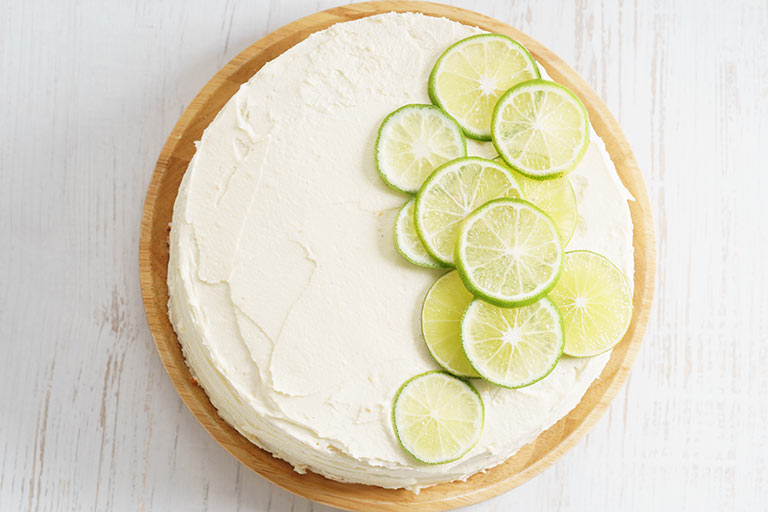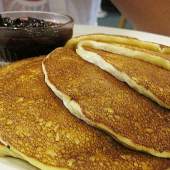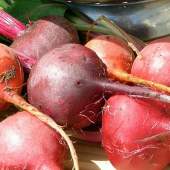Pie

“If you wish to make an apple pie from scratch, you must first invent the universe.”
— Carl Sagan
“Cut my pie into four pieces; I don’t think I could eat eight.”
— Yogi Berra
“I don’t think I’ve ever seen pie advertised. That’s how you know it’s good.”
— Adam Carolla
Just the word “pie” conjures up memories of grandmother’s house — her floury hands carefully constructing a lattice crust, the aroma of flaky, just-out-of-the-oven pastry, and result of her labors set to cool on the kitchen windowsill.
Given the easy availability of seasonal fresh fruits and the multitude of state fair pie-eating contests in summer, it should come as no surprise that August boasts no less than five national pie days: Raspberry Cream, Lemon Meringue, Ice Cream, Peach, and Chocolate Pecan. So it’s an appropriate time to examine the origins and enduring popularity of this quintessentially American dessert…that isn’t really American at all.
It was likely the ancient Egyptians who first came up with the concept of pie, and there were notable differences between their version and what we enjoy today. Their original pastry crust was very thick and quite rigid because there were no baking dishes used — the crust was merely a receptacle and was therefore downright inedible. After the fillings (savory meats and spices in the beginning) were consumed by the gentry, the meat sauce-soaked crust was often discarded altogether or tossed to the poor. Also, a typical pie crust often had a floor and a sealed-on lid like a box, and was known, for that reason, as a “coffin.” (Yum!) Later, these early pies were called “galettes” — a descriptor still used today in modern bakeries, as are the terms “tart” and “tartlette” for open-faced pies.
It was the Greeks, and then the Romans, who began to develop pastry that was as appealing as its filling. In about 160 B.C., according to What’s Cooking America, the Roman statesman known as Cato the Elder “recorded a recipe for his era’s most popular pie/cake called Placenta…[that] was more like a cheesecake.” (Double yum!)
Once the pie (or pye as it was often spelled) made it to Europe sometime in the 16th century, someone came up with the concept of an “animated” pie filled with live birds and other living creatures that would be released when the pie was cut, for the entertainment of well-heeled banquet attendees. This undoubtedly inspired the nursery rhyme line “four and twenty blackbirds baked in a pie.” What’s Cooking America goes on to say, that “in all likelihood,” the birds “flew briskly out at the assembled guests. Rabbits, frogs, turtles, other small animals, and even small people (dwarfs) were also set into pies, either alone or with birds, to be released when the crust was cut. The dwarf would emerge and walk down the length of the table, reciting poetry, sketching the guests, or doing tricks.” In one notable case, an immense pie was created that housed an entire orchestra. (The catering bill must have been considerable, as well as the banquet table required.)
It may be that the Pilgrims were the first to use local fruits and berries in their pies (on the recommendation of their new Native American friends), and also to use round pans to literally “cut corners” on costs. By the way, pumpkin pie made its first appearance at the second-ever Thanksgiving dinner in 1623.
More pie trivia:
- Most popular pie in America? Apple, of course. The runners up, in order, are pumpkin/sweet potato, chocolate (any variety), lemon meringue, and cherry. (Cherry, pumpkin, and apple pies are used to make a cherpumple.) Favorite beverage to accompany all of these? Cold milk.
- Boston Cream Pie isn’t a pie at all; it’s a yellow cake with custard, topped with chocolate.
- Pi Day (March 14), when we annually celebrate the mathematical constant π of which the first three digits are 3.14, is also the birthday of Albert Einstein. Perhaps there’s a connection?
- In colonial days, fruit pie was considered a hearty and nutritious breakfast food, not a dessert. Works for us!
- Only a third of Americans like their pie a la mode (with ice cream — vanilla is standard); this is the same percentage of people who will admit to having eaten pie in bed. And one in five Americans say they have eaten an entire pie by themselves.
- Americans spend approximately $700 million annually on pie in supermarkets. This translates to about 186 million pies, fresh and frozen. Speaking of frozen…
- Frozen pie crust was first advertised in the mid-1950s; the first patent was filed by Tennessee resident Billie Hamilton Armstrong. These are, of course, easily obtainable today in almost any grocery.
- Unusual and/or regional pies include shoofly pie, sawdust pie, chess pie, grasshopper pie, black bottom pie, and Mississippi mud pie. There’s a mock apple pie, too — the main filling ingredient is many, many crushed Ritz crackers. Nobody knows where it gets its apple taste, but was developed during the Great Depression when apples were expensive or in short supply.
- Mince, or mincemeat, pie was originally filled (as the original name suggests) with minced meats; since about the middle of the 19th century, the filling has instead incorporated a mixture of chopped nuts and dried fruits, suet, spices, and lemon juice (or brandy).
- Mr. Flip, the first film ever to feature a pie-in-the-face gag, was released way back in 1909, made at Essanay Studios in Chicago. The recipient: comedian Ben Turpin. The only movie with “Pie” in the title ever to win an Academy Award: the animated film Tweetie Pie in 1947.
- Since 1992, the World Pie-Eating Championship has been held annually in Manchester, England. It has not been without scandal — one year, it was determined that the pies in the meat and vegetarian categories were different sizes; another time, a dog named Charlie was one of the competitors, consuming an impressive 20 pies; and in yet another year, the pies ran out before the competition was over. The current record-holder has won three times.
What’s your favorite pie? (We know you’ve got at least one!) If you’re into making your own, Check, Please! has some great recipes for sweet potato pie, key lime pie, and spinach pie.
Enjoy! And don’t forget the milk.





